Mechanical CAD Master Program







Mechanical CAD Master Program Certification Course
Looking for the best Mechanical CAD training in Vadodara? Our Mechanical CAD Training Course offers an in-depth and hands-on learning experience designed to build expertise in leading CAD software used across the mechanical engineering and product design industries. This Mechanical CAD certification course in Vadodara covers essential tools such as AutoCAD Mechanical, SolidWorks, PTC CREO, Solid Edge, UG-NX CAD, Autodesk Inventor, CATIA, and Ansys.
Throughout the course, students will gain practical knowledge in AutoCAD Mechanical for accurate drafting, SolidWorks for robust 3D modeling, and PTC CREO for efficient parametric design. The program also dives into Solid Edge for advanced assembly modeling, UG-NX CAD for high-end product design, Inventor for virtual prototyping, CATIA for aerospace and automotive applications, and Ansys for simulation-driven engineering using FEA and CFD.
As one of the most sought-after Mechanical CAD coaching classes in Vadodara, this training program equips participants with real-world skills to thrive in roles such as CAD designer, mechanical engineer, or product development specialist. Graduates leave the course ready to meet industry standards and contribute to innovative engineering solutions across various sectors.
What will I learn?
- Attain mastery in using industry-standard CAD software such as SolidWorks, Autodesk Inventor, CATIA, or Creo Parametric, including advanced features and functionalities.
- Develop the ability to create and manipulate complex 3D geometries, surfaces, and solids to design intricate mechanical components and assemblies.
- Learn advanced parametric modeling techniques to create intelligent CAD models that can be easily modified and adapted to design changes.
- Gain expertise in assembling complex mechanical systems, applying motion constraints, and analyzing kinematic behavior using CAD software.
- Acquire skills in performing design optimization and analysis using CAD-integrated simulation tools for structural, thermal, and fluid flow analysis.
- Understand principles of DFM and DFA to create designs that are optimized for efficient manufacturing and assembly processes.
- Learn principles of geometric dimensioning and tolerancing (GD&T) and perform tolerance stack-up analysis to ensure manufacturability and assembly fit.
- Explore advanced surfacing techniques to model complex shapes, freeform surfaces, and class-A surfaces for automotive, aerospace, and consumer product design.
Requirements
- Basic Understanding of Mechanical Engineering Concepts
- Proficiency in Computer Skills
- Mathematical Aptitude
- CAD Software Familiarity
Adobe Premiere Pro Course Content
- Introduction to AutoCAD Mechanical
- Overview of AutoCAD Mechanical software
- Introduction to mechanical drafting and design
- Understanding the user interface and workspace
- Basic Drawing and Editing Tools
- Creating and modifying basic geometry (lines, circles, arcs)
- Using editing commands (move, copy, rotate, scale)
- Working with layers and properties
- Dimensioning and Annotations
- Adding linear, angular, and radial dimensions
- Creating and modifying dimension styles
- Adding text, leaders, and symbols to drawings
- Drawing Setup and Templates
- Setting up drawing units, scales, and limits
- Creating and managing drawing templates
- Working with title blocks and borders
- Advanced Drawing Tools
- Creating and editing complex geometry (polylines, splines)
- Using construction lines and reference geometry
- Working with blocks and external references
- Geometric Construction and Constraints
- Applying geometric constraints (parallel, perpendicular, tangent)
- Using parametric constraints to control geometry
- Exploring associative dimensioning and constraints
- Mechanical Design and Drafting
- Creating mechanical components (bolts, nuts, gears)
- Adding standard parts from libraries (fasteners, bearings)
- Using parametric features for design automation
- Assembly Design and Documentation
- Assembling components into mechanical assemblies
- Managing relationships and constraints in assemblies
- Creating exploded views and assembly drawings
- Bill of Materials (BOM) and Parts Lists
- Generating BOMs and parts lists automatically
- Customizing and formatting BOMs for different requirements
- Managing and updating BOM data
- Sheet Metal Design
- Creating sheet metal parts and components
- Adding bends, flanges, and reliefs to sheet metal geometry
- Unfolding and flattening sheet metal parts
- Parametric Design and Constraints
- Creating parametric designs using variables and formulas
- Applying geometric and dimensional constraints
- Exploring design variations and alternatives
- Advanced Topics and Customization
- Exploring advanced features and tools in AutoCAD Mechanical
- Customizing menus, toolbars, and shortcuts
- Integrating with other CAD and design software
- Project Work and Case Studies
- Real-world mechanical design projects and examples
- Hands-on exercises and project-based learning
- Presentations and discussions on project outcomes
- Introduction to SolidWorks
- Overview of SolidWorks software and its capabilities
- Understanding the parametric 3D modeling approach
- Introduction to the SolidWorks user interface and navigation
- Sketching Fundamentals
- Understanding sketching principles and best practices
- Creating and editing 2D sketches using sketch entities (lines, circles, rectangles, etc.)
- Applying sketch constraints and dimensions to control geometry
- Part Modeling Basics
- Introduction to part modeling workflows
- Creating basic 3D features by extruding and revolving sketches
- Understanding the concept of features, sketches, and design intent
- Intermediate Part Modeling
- Exploring more advanced modeling techniques such as fillets, chamfers, and shells
- Working with multi-body parts and configurations
- Utilizing advanced features like sweeps, lofts, and ribs
- Advanced Part Modeling
- Mastering complex modeling tasks with surface modeling tools
- Creating sheet metal parts and utilizing specialized sheet metal features
- Exploring the SolidWorks Toolbox for standard parts and components
- Assembly Modeling
- Introduction to assembly modeling and its components
- Inserting and positioning components within assemblies
- Applying assembly constraints and relationships to define motion
- Advanced Assembly Techniques
- Working with advanced assembly features like mate references and smart components
- Creating exploded views and animations for assembly instructions
- Performing interference detection and collision checking
- Drawing and Detailing
- Creating and annotating drawing views (orthographic, isometric, auxiliary)
- Adding dimensions, annotations, and GD&T symbols to drawings
- Generating bill of materials (BOM) and parts lists
- Choose Any One Specialisation
- Sheet Metal Design
- Understanding sheet metal design principles and terminology
- Creating sheet metal parts with bends, flanges, and forming tools
- Unfolding and flattening sheet metal parts for manufacturing
- Weldments
- Creating structural frames and weldment structures
- Adding weld beads, cuts, and end treatments to weldments
- Detailing weldment drawings with weld symbols and annotations
- Surface Modeling
- Exploring advanced surface modeling techniques for complex shapes
- Creating and editing surfaces using loft, sweep, and boundary features
- Converting solid models to surfaces and vice versa
- Mold Design
- Introduction to mold design principles and terminology
- Creating parting surfaces, shut-off surfaces, and split lines for molds
- Generating mold cavities and cores using core/cavity tools
- Motion Study and Simulation
- Performing motion studies to simulate mechanical motion and animations
- Introduction to finite element analysis (FEA) for structural simulations
- Analyzing stress, displacement, and factor of safety in parts and assemblies
- Design Automation and Customization
- Introduction to macros and automation in SolidWorks using Visual Basic for Applications (VBA)
- Customizing the SolidWorks environment with templates, libraries, and design standards
- Integrating SolidWorks with other CAD/CAM software and systems
- Collaboration and Data Management
- Working with Product Data Management (PDM) systems for data organization and collaboration
- Collaborating with team members and stakeholders through shared projects and design reviews
- Managing design revisions and version control for projects
- Project Work and Case Studies
- Applying learned skills and techniques to real-world design projects and examples
- Hands-on exercises and project-based learning to reinforce concepts
- Presentations and discussions on project outcomes and best practices
- Introduction to Solid Edge
- Overview of Solid Edge software
- Understanding the user interface and navigation
- Introduction to 2D drafting and 3D modeling concepts
- Sketching Fundamentals
- Creating and editing 2D sketches
- Applying sketch constraints and dimensions
- Understanding sketching best practices
- Part Modeling Basics
- Creating basic 3D features (extrude, revolve, sweep)
- Understanding feature-based parametric modeling
- Using the feature manager tree for feature management
- Intermediate Part Modeling
- Exploring advanced modeling techniques (fillets, chamfers, patterns)
- Working with synchronous and ordered modeling workflows
- Utilizing advanced features like blends, lofts, and ribs
- Advanced Part Modeling
- Mastering complex modeling tasks with surface modeling
- Creating sheet metal parts and utilizing specialized features
- Exploring assembly modeling techniques
- Assembly Design
- Inserting and positioning components within assemblies
- Applying assembly constraints and relationships
- Exploring assembly features and manipulation tools
- Drawing and Detailing
- Creating and annotating drawing views
- Adding dimensions, annotations, and GD&T symbols
- Generating bill of materials (BOM) and parts lists
- Sheet Metal Design
- Understanding sheet metal design principles and terminology
- Creating sheet metal parts with bends, flanges, and forming tools
- Unfolding and flattening sheet metal parts
- Surface Modeling
- Exploring advanced surface modeling techniques
- Creating and editing surfaces using loft, sweep, and boundary features
- Converting solid models to surfaces and vice versa
- Parametric Modeling Techniques
- Utilizing parameters and relations for design automation
- Creating family tables and configurable components
- Implementing design variations and options
- Simulation and Analysis
- Introduction to finite element analysis (FEA)
- Analyzing stress, displacement, and factor of safety in parts and assemblies
- Optimizing designs for performance and reliability
- Collaboration and Data Management
- Working with Product Data Management (PDM) systems
- Collaborating with team members and stakeholders
- Managing design revisions and version control
- Customization and API Programming
- Customizing the Solid Edge environment and user interface
- Creating macros and automation scripts using Solid Edge API
- Integrating Solid Edge with other CAD/CAM software and systems
- Case Studies and Real-World Applications
- Analyzing real-world design examples and case studies
- Hands-on exercises and projects to reinforce concepts
- Presentations and discussions on best practices and industry standards
- Introduction to Creo
- Overview of Creo Parametric software
- Understanding the user interface and navigation
- Introduction to parametric 3D modeling concepts
- Sketching Fundamentals
- Creating and editing 2D sketches
- Applying sketch constraints and dimensions
- Understanding sketching best practices
- Part Modeling Basics
- Creating basic 3D features (extrude, revolve, sweep)
- Understanding feature-based parametric modeling
- Using the feature manager tree for feature management
- Intermediate Part Modeling
- Exploring advanced modeling techniques (fillets, chamfers, patterns)
- Working with multi-body parts
- Utilizing advanced features like sweeps, lofts, and ribs
- Advanced Part Modeling
- Mastering complex modeling tasks with surface modeling
- Creating sheet metal parts and utilizing specialized features
- Exploring assembly modeling techniques
- Assembly Design
- Inserting and positioning components within assemblies
- Applying assembly constraints and relationships
- Exploring assembly features and manipulation tools
- Drawing and Detailing
- Creating and annotating drawing views
- Adding dimensions, annotations, and GD&T symbols
- Generating bill of materials (BOM) and parts lists
- Sheet Metal Design
- Understanding sheet metal design principles and terminology
- Creating sheet metal parts with bends, flanges, and forming tools
- Unfolding and flattening sheet metal parts
- Surface Modeling
- Exploring advanced surface modeling techniques
- Creating and editing surfaces using loft, sweep, and boundary features
- Converting solid models to surfaces and vice versa
- Parametric Modeling Techniques
- Utilizing parameters and relations for design automation
- Creating family tables and configurable components
- Implementing design variations and options
- Mechanism Design and Analysis
- Applying motion constraints and mates to simulate mechanical motion
- Exploring mechanism design and animation tools
- Performing basic mechanism analysis and simulation
- Simulation and Analysis
- Introduction to finite element analysis (FEA)
- Analyzing stress, displacement, and factor of safety in parts and assemblies
- Optimizing designs for performance and reliability
- Introduction to Creo Parametric Customization
- Customizing the Creo Parametric environment
- Creating and managing templates, libraries, and design standards
- Integrating Creo Parametric with other CAD/CAM software and systems
- Collaboration and Data Management
- Working with Product Data Management (PDM) systems
- Collaborating with team members and stakeholders
- Managing design revisions and version control
- Case Studies and Real-World Applications
- Analyzing real-world design examples and case studies
- Hands-on exercises and projects to reinforce concepts
- Presentations and discussions on best practices and industry standards
- Introduction to Ansys
- Overview of Ansys software and its applications
- Understanding the Ansys user interface and navigation
- Introduction to finite element analysis (FEA) and computational fluid dynamics (CFD) concepts
- Ansys Basics
- Setting up Ansys workbench environment
- Importing CAD models into Ansys
- Understanding geometry editing and cleanup tools
- Structural Analysis with Ansys
- Preprocessing: Meshing techniques and best practices
- Defining material properties and boundary conditions
- Performing static and dynamic structural analyses
- Thermal Analysis with Ansys
- Introduction to thermal analysis concepts
- Defining heat transfer boundary conditions
- Performing steady-state and transient thermal analyses
- Fluid Dynamics Analysis with Ansys Fluent
- Introduction to fluid dynamics analysis
- Preprocessing: Meshing techniques for fluid domains
- Defining flow boundary conditions and solver settings
- Performing laminar and turbulent flow simulations
- Multiphysics Analysis
- Introduction to multiphysics simulations
- Performing fluid-structure interaction (FSI) analyses
- Coupling structural and thermal analyses
- Optimization and Design Exploration
- Introduction to design optimization and exploration
- Defining design variables, constraints, and objectives
- Performing parametric studies and optimization iterations
- Postprocessing and Results Interpretation
- Interpreting and visualizing analysis results
- Generating contour plots, animations, and reports
- Understanding stress, displacement, temperature, and flow velocity distributions
- Advanced Topics in Ansys
- Introduction to advanced analysis capabilities (e.g., nonlinear, transient dynamic, fatigue)
- Exploring specialized modules (e.g., Ansys Workbench, Ansys Mechanical, Ansys Fluent)
- Understanding best practices for complex simulations
- Case Studies and Real-World Applications
- Analyzing real-world engineering problems and case studies
- Hands-on exercises and projects to reinforce concepts
- Presentations and discussions on industry applications and standards
- Introduction to UG-NX CAD
- Overview of UG-NX CAD software
- Understanding the user interface and navigation
- Introduction to 2D drafting and 3D modeling concepts
- Sketching and Constraints
- Creating and editing 2D sketches
- Applying sketch constraints and dimensions
- Understanding sketching best practices
- Part Modeling Basics
- Creating basic 3D features (extrude, revolve, sweep)
- Understanding feature-based parametric modeling
- Using the feature manager tree for feature management
- Intermediate Part Modeling
- Exploring advanced modeling techniques (fillets, chamfers, patterns)
- Working with synchronous and ordered modeling workflows
- Utilizing advanced features like blends, lofts, and ribs
- Advanced Part Modeling
- Mastering complex modeling tasks with surface modeling
- Creating sheet metal parts and utilizing specialized features
- Exploring assembly modeling techniques
- Assembly Design
- Inserting and positioning components within assemblies
- Applying assembly constraints and relationships
- Exploring assembly features and manipulation tools
- Drawing and Detailing
- Creating and annotating drawing views
- Adding dimensions, annotations, and GD&T symbols
- Generating bill of materials (BOM) and parts lists
- Surface Modeling
- Exploring advanced surface modeling techniques
- Creating and editing surfaces using loft, sweep, and boundary features
- Converting solid models to surfaces and vice versa
- Sheet Metal Design
- Understanding sheet metal design principles and terminology
- Creating sheet metal parts with bends, flanges, and forming tools
- Unfolding and flattening sheet metal parts
- Simulation and Analysis
- Introduction to finite element analysis (FEA)
- Analyzing stress, displacement, and factor of safety in parts and assemblies
- Optimizing designs for performance and reliability
- Collaboration and Data Management
- Working with Product Data Management (PDM) systems
- Collaborating with team members and stakeholders
- Managing design revisions and version control
- Customization and API Programming
- Customizing the UG-NX environment and user interface
- Creating macros and automation scripts using UG-NX API
- Integrating UG-NX with other CAD/CAM software and systems
- Case Studies and Real-World Applications
- Analyzing real-world design examples and case studies
- Hands-on exercises and projects to reinforce concepts
- Presentations and discussions on best practices and industry standards
- Introduction to Autodesk Inventor
- Overview of Autodesk Inventor and its applications
- Understanding the user interface and navigation
- Introduction to parametric 3D modeling concepts
- Sketching Fundamentals
- Creating and editing 2D sketches
- Applying sketch constraints and dimensions
- Understanding sketching best practices
- Part Modeling Basics
- Creating basic 3D features (extrude, revolve, sweep)
- Understanding feature-based parametric modeling
- Using the feature manager tree for feature management
- Intermediate Part Modeling
- Exploring advanced modeling techniques (fillets, chamfers, patterns)
- Working with synchronous and ordered modeling workflows
- Utilizing advanced features like blends, lofts, and ribs
- Advanced Part Modeling
- Mastering complex modeling tasks with surface modeling
- Creating sheet metal parts and utilizing specialized features
- Exploring assembly modeling techniques
- Assembly Design
- Inserting and positioning components within assemblies
- Applying assembly constraints and relationships
- Exploring assembly features and manipulation tools
- Drawing and Detailing
- Creating and annotating drawing views
- Adding dimensions, annotations, and GD&T symbols
- Generating bill of materials (BOM) and parts lists
- Sheet Metal Design
- Understanding sheet metal design principles and terminology
- Creating sheet metal parts with bends, flanges, and forming tools
- Unfolding and flattening sheet metal parts
- Weldments and Frame Generator
- Creating welded structures and frames
- Utilizing weldment and frame generator tools
- Adding standard and custom structural members
- Surface Modeling
- Exploring advanced surface modeling techniques
- Creating and editing surfaces using loft, sweep, and boundary features
- Converting solid models to surfaces and vice versa
- Simulation and Analysis
- Introduction to finite element analysis (FEA)
- Analyzing stress, displacement, and factor of safety in parts and assemblies
- Optimizing designs for performance and reliability
- Collaboration and Data Management
- Working with Product Data Management (PDM) systems
- Collaborating with team members and stakeholders
- Managing design revisions and version control
- Customization and API Programming
- Customizing the Autodesk Inventor environment and user interface
- Creating macros and automation scripts using Inventor API
- Integrating Inventor with other CAD/CAM software and systems
- Case Studies and Real-World Applications
- Analyzing real-world design examples and case studies
- Hands-on exercises and projects to reinforce concepts
- Presentations and discussions on best practices and industry standards
- Introduction to Autodesk Inventor
- Overview of Autodesk Inventor and its applications
- Understanding the user interface and navigation
- Introduction to parametric 3D modeling concepts
- Sketching Fundamentals
- Creating and editing 2D sketches
- Applying sketch constraints and dimensions
- Understanding sketching best practices
- Part Modeling Basics
- Creating basic 3D features (extrude, revolve, sweep)
- Understanding feature-based parametric modeling
- Using the feature manager tree for feature management
- Intermediate Part Modeling
- Exploring advanced modeling techniques (fillets, chamfers, patterns)
- Working with synchronous and ordered modeling workflows
- Utilizing advanced features like blends, lofts, and ribs
- Advanced Part Modeling
- Mastering complex modeling tasks with surface modeling
- Creating sheet metal parts and utilizing specialized features
- Exploring assembly modeling techniques
- Assembly Design
- Inserting and positioning components within assemblies
- Applying assembly constraints and relationships
- Exploring assembly features and manipulation tools
- Drawing and Detailing
- Creating and annotating drawing views
- Adding dimensions, annotations, and GD&T symbols
- Generating bill of materials (BOM) and parts lists
- Sheet Metal Design
- Understanding sheet metal design principles and terminology
- Creating sheet metal parts with bends, flanges, and forming tools
- Unfolding and flattening sheet metal parts
- Weldments and Frame Generator
- Creating welded structures and frames
- Utilizing weldment and frame generator tools
- Adding standard and custom structural members
- Surface Modeling
- Exploring advanced surface modeling techniques
- Creating and editing surfaces using loft, sweep, and boundary features
- Converting solid models to surfaces and vice versa
- Simulation and Analysis
- Introduction to finite element analysis (FEA)
- Analyzing stress, displacement, and factor of safety in parts and assemblies
- Optimizing designs for performance and reliability
- Collaboration and Data Management
- Working with Product Data Management (PDM) systems
- Collaborating with team members and stakeholders
- Managing design revisions and version control
- Customization and API Programming
- Customizing the Autodesk Inventor environment and user interface
- Creating macros and automation scripts using Inventor API
- Integrating Inventor with other CAD/CAM software and systems
- Case Studies and Real-World Applications
- Analyzing real-world design examples and case studies
- Hands-on exercises and projects to reinforce concepts
- Presentations and discussions on best practices and industry standards
Get in touch
400+ Global Employment Partners













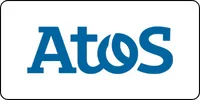

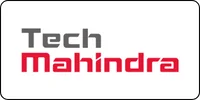


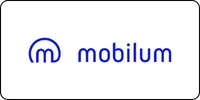











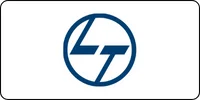
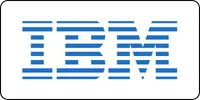






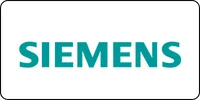
Why Choose Mechanical CAD Certification Course from Bright Computer Education?
Mechanical CAD courses are developed to provide a practical, industry-focused, and skill-oriented learning experience for aspiring engineers and designers. Whether you’re planning to Learn Mechanical CAD in Vadodara, just starting out with Mechanical CAD for beginners in Vadodara, or aiming to upgrade your skills through Advanced Mechanical CAD training in Vadodara, these programs are structured for learners at all levels. The curriculum covers essential tools and techniques including 2D drafting, 3D modeling, assemblies, and simulations using industry-standard software like AutoCAD, SolidWorks, and Creo. With expert guidance, real-time design projects, and hands-on practice, students gain the expertise required to succeed in design engineering, manufacturing, and product development roles.

Designed Curriculum
Our curriculum covers everything from basic to advanced topics. Topics include variables, data types, control structures, functions, OOP, STL, and more.

Hands-on Learning
Dive into practical exercises and coding projects that reinforce learning and help you build real-world applications.

Experienced Instructors
Learn from industry experts with years of experience in C programming and software development.
Flexible Learning
Choose from flexible scheduling options, including self-paced learning or live virtual classes to fit your busy lifestyle.
Career Development
Gain valuable skills sought after by employers in various industries, from software development to embedded systems and beyond.
Interactive Learning
Engage with fellow learners and instructors through live Q&A sessions, discussion forums, and collaborative coding exercises.
Diverse Career Opportunities in Mechanical CAD: Exploring Paths in India's Technology Sector
A Mechanical CAD (Computer-Aided Design) course trains individuals in creating detailed 2D and 3D models of mechanical components and systems using software like AutoCAD, SolidWorks, CATIA, and Creo. It is essential for designing, analyzing, and optimizing mechanical products in industries such as manufacturing, automotive, aerospace, and robotics.
In India, Mechanical CAD professionals typically earn between ₹3–8 lakhs per annum, depending on experience, skill level, and specialization. CAD designers and engineers are in demand in sectors like automobile manufacturing, heavy machinery, consumer electronics, and R&D organizations.
Abroad, especially in countries like the USA, Germany, Canada, Japan, and the Middle East, skilled Mechanical CAD professionals earn between $55,000 to $85,000 per year. Many global companies rely on CAD experts for precision engineering, product development, and innovation in design.
Frequently Asked Questions
Recently View Courses
Course Details Curriculum Placement FAQ’s Primavera Training Primavera is a comprehensive project portfolio management...
Read MoreCourse Details Curriculum Placement FAQ’s Ansys Training Bright Computer Education delivers top-tier Ansys Training...
Read MoreCourse Details Curriculum Placement FAQ’s Revit In One Live Training Master the essential skills...
Read More
